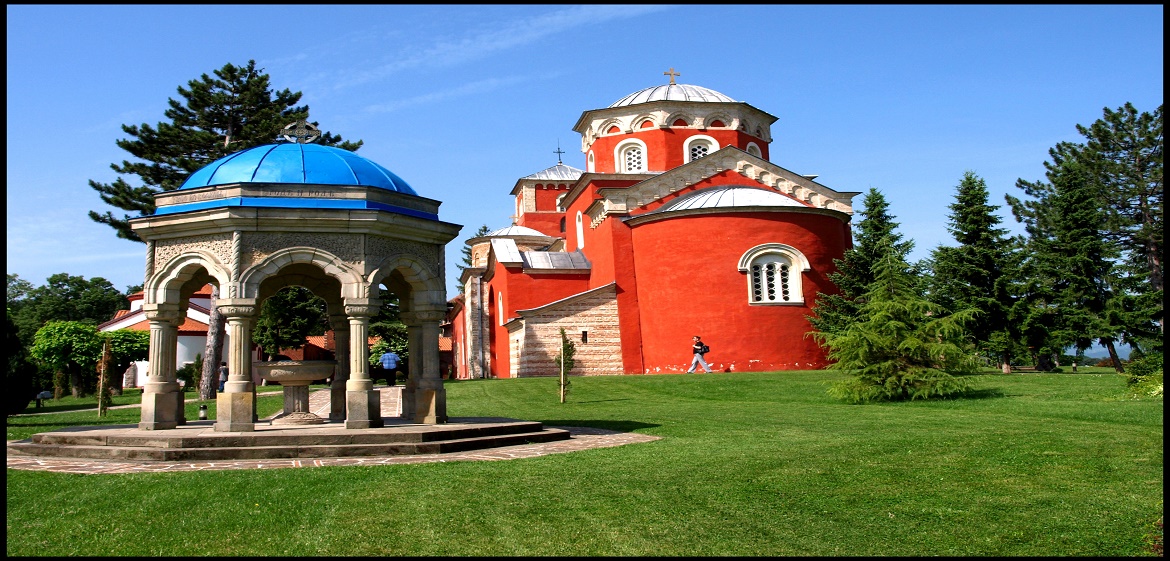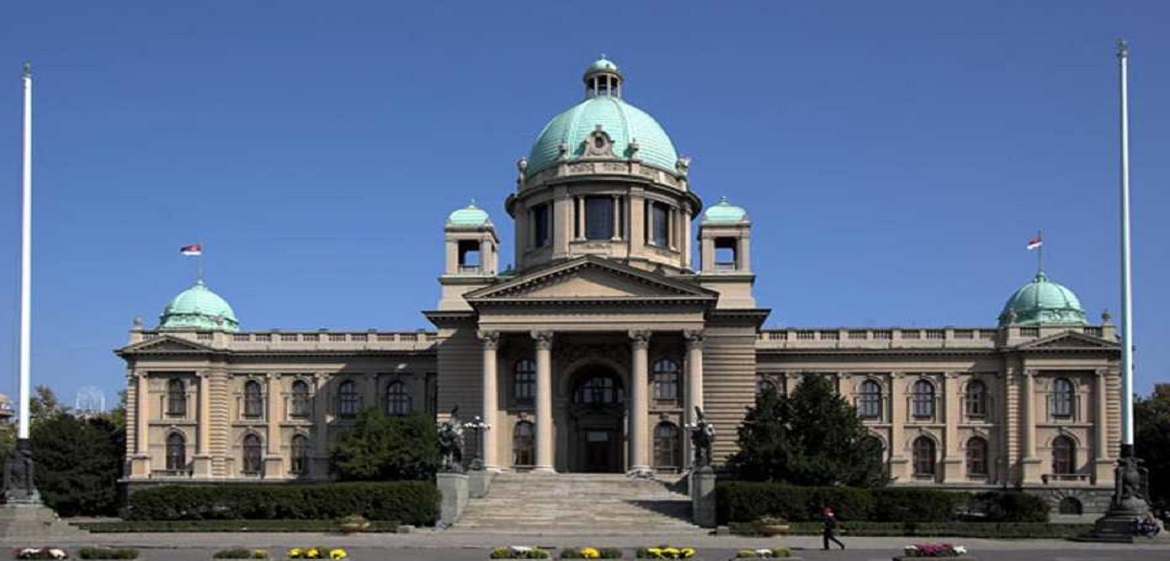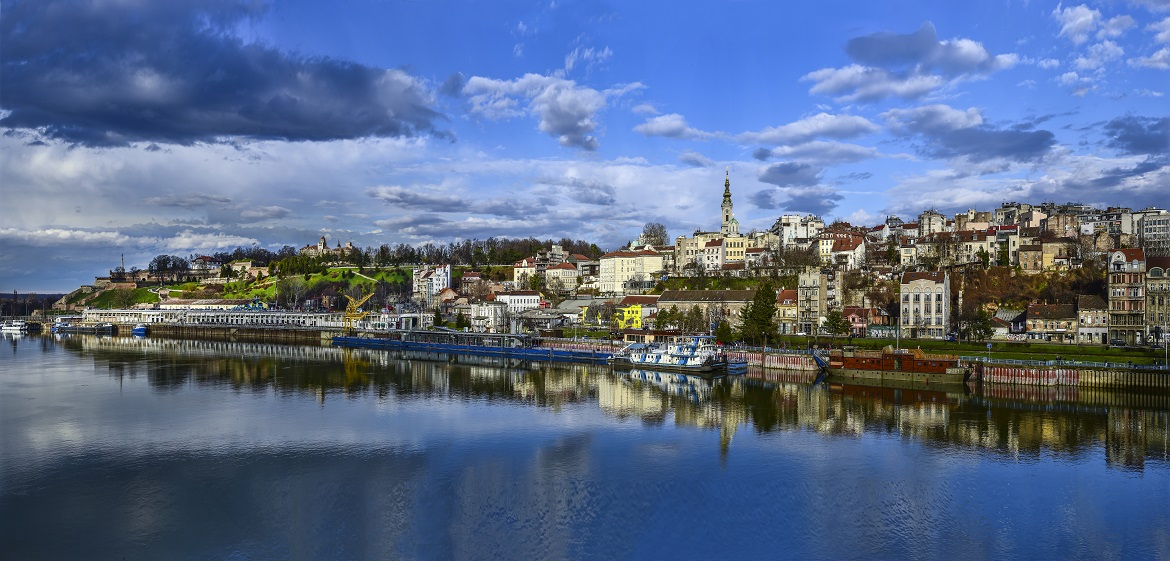Churches and monasteries in Serbia and Macedonia are among their most precious treasures, where the spiritual and artistic heritage of the Byzantine Orthodox tradition is magnificently preserved.
Day 1
Belgrade (D)
Arrival to Belgrade. Transfer to the hotel. Sightseeing tour of the city, visit the Kalemegdan fortress, primarily built by Celts in the third century. Square of Republic, Knaz Mihailova Street, Belgrade’s main pedestrian zone, Terazije, Parliament, St. Marko Church, and St. Sava Temple. Dinner in a traditional restaurant on Skadarlija Street, bohemian quarter of Belgrade and unavoidable place to taste local specialties. Overnight.
Day 2
Belgrade – Monastery Manasija – Monastery Kalenic – Monastery Zica – Kraljevo (BL)
After breakfast departure to Monastery Manasija also known as Resava, founded by Despot Stefan Lazarevic in the 15th century. After a visit to monasteries, break for lunch at the restaurant placed in a relaxing atmosphere by the waterfall, where you can try domestic cuisine. Tour continues to Monastery Kalenic built at the beginning of the 15th century. Kalenić was declared Monument of Culture of Exceptional Importance in 1979, and it is protected by the Republic of Serbia. Visit Monastery Žiča, an early 13th-century monastery built by the first King of Serbia, Stefan the First-Crowned and the first Head of the Serbian Church, Saint Sava. After that, you’ll arrive in Kraljevo where you will be accommodated. Dinner and overnight.
Day 3
Kraljevo – Monastery Studenica – Monastery Sopocani – Monastery Mileseva (BD)
After breakfast, we’ll take you to the Monastery Studenica, dedicated to the Presentation of the Holy Virgin, presents the mother-church of all Serbian temples. Follows a visit to monastery Sopocani, built by Uros I Nemanjic and is famous for its numerous frescoes. Departure to Monastery Mileševa. The monastery church is dedicated to the Ascension of the Lord and it was founded by the Serbian King Vladislav in the 13th century. The monastery is the most famous for the fresco of the White Angel. Accommodation and dinner at the Monastery complex. Overnight.
Day 4
Patriarchy of Pec – Monastery Decani – Gracanica – Priština (BD)
Breakfast. Departure to the border with Montenegro through which we’ll enter the territory of Kosovo. Upon arrival, follows a visit to the Patriarchy of Pec, UNESCO. The complex has four churches built from 1.220 to 1.330. The oldest one, dedicated to the Holy Apostles, was built in the mid-13th century, while the last one, devoted to St. Nicholas, dates back to the first half of the 14th century. The Patriarchate of Pec plays a major role in the Church and State history of Serbia. The nuns returned to the Patriarchate in 1957 to maintain and care for it. There are currently twenty-five nuns residing here at this time. Continue to Monastery Decani. Visoki Dečani is a major Serbian Orthodox Christian monastery 12 km south of the town of Peć. The main temple is the largest medieval church in the Balkans containing the most extensive preserved fresco decoration. The tour goes forward to the Gracanica monastery, founded by the Serbian king Stefan Milutin in 1321. Gračanica Monastery was declared Monument of Culture of Exceptional Importance and it is protected by the Republic of Serbia and placed on UNESCO’s World Heritage List under the name of Medieval Monuments in Kosovo as an extension of the Visoki Dečani site which was overall placed on the List of World Heritage in Danger. After the tour of monasteries for this day, accommodation and dinner in a hotel in Pristina.
Day 5
Milesheva – Priština – Prizren (Bogorodica Ljeviska) – Skopje (BD)
After breakfast, departure to Prizren and visit to Church Bogorodica Ljeviska (Our Lady of Ljeviš). Continue to Macedonia. Upon arrival in Macedonia, we’ll first visit the Church of St. George in Staro Nagoricane which occupies one of the most important places in the history of medieval Byzantine art. The original church of Roman IV Diogenes from the 11th century is preserved only walls of the façade. Today’s church was built by Serbian King Stefan on the 2nd in 1313. Continue to Skopje and visit the Monastery Nerezi dedicated to Saint Panteleimon, built in the 12th century and which represents an important monument from the Byzantine period built on the slopes of the Mountain Vodno, decorated with very well preserved frescoes among which is the fresco the Lamentation of Christ. After that visit to Monastery Andrea Skopski. Accommodation and dinner in a hotel in Skopje. Overnight.
Day 6
Skopje – Ohrid (BD)
In the morning the tour will start with a visit to the Cathedral of St. Clement of Ohrid in the center of Skopje. Following you will visit the St. Nikita Monastery. The church and a chapel dedicated to St. Jovan the Baptists were erected by the Serbian King Milutin in 1307-1308. This church is well known for its frescoes – the work of the famous painters Michael and Eutihie. Departure to Ohrid, the town museum and UNESCO protected heritage. Some free time before leaving for Ohrid. Upon arrival in Ohrid visit of St. Sophia Church, one of the largest medieval churches in the area which was probably built in the 11th century. Tour will continue to visit one of the oldest churches in Ohrid, the Church of Mother of God – Peribleptos (St. Bogorodica Perivpleta) built up in 1.295. This church is famous for its unique fresco-paintings from the 11th and 12th centuries. Accommodation in the hotel. Dinner in a local restaurant on the coast of Lake Ohrid. Overnight.
Day 7
Ohrid – Kurbanovo – Strumica – Skopje (arduous day) (BD)
Early breakfast after which you will visit the St. Clement (St. Panteleimon) at Plaosnik archeological site in Ohrid. St. Clement built his temple in the 9th century in 863 AD, on the bases of an early Christian church from 5th or 6th century AD. After this visit, you will continue to Prespa region and village Kurbinovo where will be visited Church of St. George. This village is located on the slopes of the beautiful mountain Pelister, near the blue waters of Lake Prespa. The monastery church is built by an unknown man in 1191. and it is famous for its very well preserved frescoes. Heading to village Vodocha, near Strumica, for a visit of the church St. Leonitie – the former bishop’s basilica – the head office of the Strumica bishopry. It is presumed that this church dates from the period of the time of Zar Samuel and the village Vodocha got this name when 14000 Samuel’s soldiers had gone blind here after the battle on Balasica Mountain. Vodocha (“vadiochi”) means “taking eyes out”. The tour goes forward back to Skopje where you will be accommodated and have dinner. Overnight.
Day 8
Skopje (B)
After breakfast departure to the airport. End of the tour.
Price on request
Price includes
- Professionally licensed guide services during the tour
- Bus transport as per program
- Accommodation in 4* hotels in Belgrade, Kraljevo, Priština, Skopje, Ohrid, and the accommodation in Monastery Mileševa
- Halfboard service
- All entrance tickets according to the program
The price does not include
- Flights to Belgrade/from Skopje
- Drinks
- Other costs not mentioned in the program















Get Social